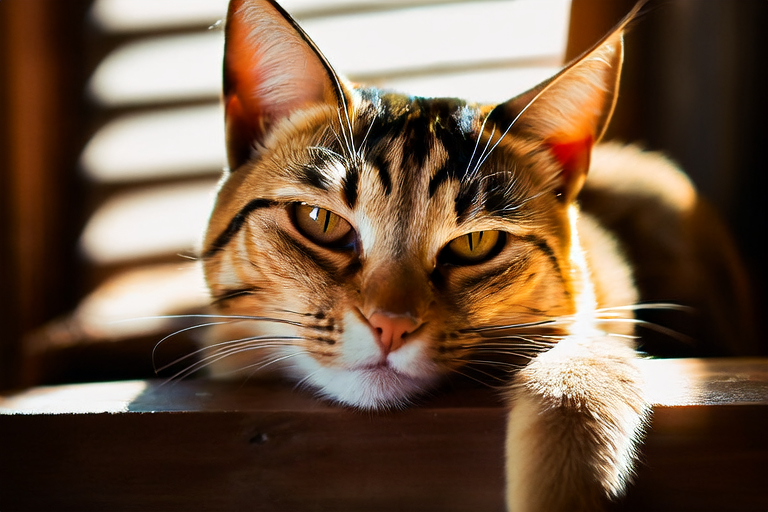The Unique History and Origins of the Abyssinian Cat
The Abyssinian cat is a breed known for its unique appearance and distinct personality. With its short, ticked coat, large ears, and almond-shaped eyes, this cat stands out from other breeds. The coat color typically ranges from ruddy (a warm reddish-brown), cinnamon, blue, and fawn. The Abyssinian has a slender, athletic build and a graceful, elegant posture. Their expressive faces and curious, intelligent expressions make them endearing to many cat lovers. In terms of personality, Abyssinians are highly active, inquisitive, and social. They are often referred to as “dog-like” cats due to their loyalty and affectionate nature towards their owners. These cats enjoy interactive play and thrive on companionship.
History and Early Domestication
The origins of the Abyssinian cat are shrouded in mystery and controversy. While the breed’s name suggests an association with Abyssinia, now known as Ethiopia, the true origins of the breed are not definitively known. The earliest records of Abyssinian cats can be traced back to the late 19th century, when they were first exhibited at cat shows in England. One of the earliest known Abyssinians was named Zula, who was brought to England by Captain Barrett-Lennard after the Abyssinian War in 1868. However, it is widely believed that the breed has roots that go much further back in history.
Some experts suggest that the Abyssinian may have descended from ancient Egyptian cats. Archaeological evidence, such as mummified cats found in Egypt, indicates that the ancestors of the Abyssinian may have been worshipped and domesticated there. The similarity between the Abyssinian’s coat pattern and that of ancient Egyptian cat statues supports this theory. Additionally, genetic studies have shown that the Abyssinian shares common ancestry with cats native to Southeast Asia, particularly those found in regions like India and Sri Lanka. These findings suggest that the breed’s ancestors may have migrated through these areas before reaching Europe.
Influences on Development
The development of the Abyssinian breed has been influenced by various factors, including geography and human activities. The geographical isolation of certain regions, such as the coastal areas of the Indian Ocean, may have contributed to the preservation of specific genetic traits in local cat populations. Human activities, such as trade and exploration, played a significant role in introducing Abyssinian-like cats to different parts of the world. The breeding practices of early cat fanciers also played a crucial role in shaping the modern Abyssinian breed. Selective breeding aimed at enhancing desirable traits, such as the distinctive ticked coat and elegant physique, helped establish the breed’s unique characteristics.
Cultural Significance
In different cultures, the Abyssinian cat holds symbolic meanings or special statuses. In ancient Egypt, cats were revered and considered sacred animals. They were associated with various gods and goddesses, such as Bastet, the goddess of fertility and protection. The worship of cats in Egypt may have contributed to the domestication and veneration of cat-like creatures, which could have influenced the development of the Abyssinian breed. In modern times, Abyssinians are often seen as symbols of elegance and grace. Their regal appearance and friendly demeanor make them popular pets among cat enthusiasts worldwide.
Scientific Evidence
Archaeological discoveries and genetic research provide scientific support for the theories regarding the origins and development of the Abyssinian cat. Mummified cats found in Egypt exhibit coat patterns similar to those of modern Abyssinians, suggesting a connection between the two. Genetic studies have revealed that the Abyssinian shares common ancestry with cats from Southeast Asia, indicating possible migration routes that could have introduced the breed’s ancestors to different regions. These findings contribute to our understanding of the breed’s complex history and help explain the unique characteristics that define the Abyssinian today.
Conclusion
The Abyssinian cat is a fascinating breed with a rich and complex history. Its unique appearance and personality make it a beloved pet for many cat lovers. Through archaeological discoveries, genetic research, and historical accounts, we have gained insights into the breed’s origins and development. Despite the mysteries that still surround the Abyssinian, its enduring popularity and distinctive features ensure its place in the world of cat breeds. As cat breeding continues to evolve, the future of the Abyssinian breed looks promising, with ongoing efforts to preserve its unique characteristics and improve its health and well-being.
